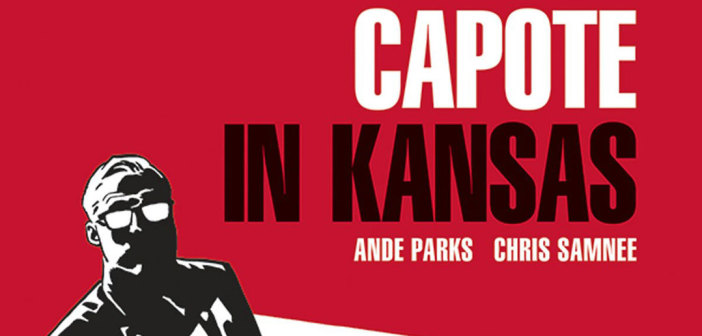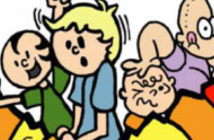On the night of November 15, 1959, the Clutter family was murdered in their home in Holcomb, Kansas, by two unknown killers. The morning after in Brooklyn, New York, American author Truman Capote read a brief 335-word article on the front page of the New York Times about the occurrence. The seven years that followed turned into an obsession for the writer; Capote was driven to craft his magnum opus, In Cold Blood, while sacrificing a piece of his spirit in the process.
Down the decades since the release of In Cold Blood, Capote’s “nonfiction novel” not only reinvented both American reportage and literature, but the tale also continuously captured the dark imagination of its audience. The book itself was adapted twice: once as a major motion picture in 1967, written and directed by Richard Brooks, and also as a miniseries made for television in 1996. But it wasn’t until September 2005 that the story of Capote himself was told on the big screen. When Capote hit theaters, the film received a great deal of praise, earning Philip Seymour Hoffman the Academy Award for Best Actor for his portrayal of Truman Capote. Director Bennett Miller and screenwriter Dan Futterman also received a great deal of cheer for their contributions in the creation of the film.
But before Capote, another adaptation of Truman Capote’s trials in Kansas preceded the release of the film by only two and a half months. The graphic novel Capote in Kansas was released by Oni Press, written and lettered by Ande Parks and illustrated by Chris Samnee. As a combination of smooth storytelling and outstanding artwork, Capote in Kansas explored not only the writer’s outer struggles as he researched his book, but also the inner turmoil that manifested as a result.
The story began by introducing Capote’s socialite lifestyle, moving around various expensive Manhattan restaurants and clubs while gossiping with his rich friends. It wasn’t until he read the brief news story in the Times about the gruesome Clutter murders that his life was turned on its head. With his lifelong friend, Nelle Harper Lee, Capote traveled to Holcomb, Kansas, to discover the socio-cultural impact of the family’s abrupt and bloody murder. The two killers, Richard Hickock and Perry Smith, were eventually captured, which marked the beginning of the emotional maelstrom that plagued Capote ever since. Trying the separate the violent details of the killings from the humanity of the killers, Capote in Kansas delivers a stellar story that exposes Capote’s personal and professional dilemmas while trying to craft his greatest work.
The true power of the graphic novel lies with the fictional liberties taken by Parks. Dubbed a “drawn novel,” the book fictionalizes events in order to convey deeper symbolic messages, the most apparent being Capote’s friendship with the ghost of Nancy Clutter, who acts as a window into the psyche of Capote.
While Parks’ writing is solid and insightful, the illustrative beauty of Chris Samnee’s artwork is what sells the title. His style is starkly black-and-white chiaroscuro, a simple duality of colors that adds an interesting effect to the story, as Capote’s inner creative and emotional workings are anything but simple. But the austere usage of light and shadow also adds a heavy noir feel to the graphic novel, flawlessly accenting the tale being told. Parks’ panel layouts compliment Samnee’s skills perfectly, and his specific depictions of the Clutter home are as eerie as they are lovely, creating a deeply potent atmosphere.
Though brief, the 120-page book that is Capote in Kansas is well worth the small monetary investment; the story is a precious addition to any library of comics and prose alike. And instead of ending with a sad tone, Parks and Samnee conclude their own adaptation with a more upbeat and optimistic feeling. Ending with the writer’s famous (and ironically named when considering the graphic novel) Black and White Ball, readers not only see Capote finally enjoying some downtime after finishing his novel, but a ghostly friend also enjoys herself one last time before finding peace.
This comic book review originally appeared on Comic News on 05 February 2009.




